The Best Air Compressor For Your Home Garage

After a great floor jack and a tool chest, getting the best air compressor is probably next on any home mechanic’s wish list. Cordless tools are so good now that in some cases they’re even better than air tools, but we don’t know any electric tool that can sandblast, spray paint, inflate a truck tire in a few seconds, or blow off a work surface like an air compressor. Air tools are also less expensive than comparable cordless tools, and never run out of batteries. Once you have your compressor set up, you can turn it on in the morning, and it’s ready to go at a moment’s notice at for the rest of the day.
Any home garage will benefit from having at least an inexpensive air compressor. A portable electric tire inflator is great for emergencies, but not something you want to use regularly. With a small compressor all it takes is an air hose, some fittings, and an inflator, and you can pump up any tire (and anything else inflatable) in just a few seconds.
There are also tools, like an air chisel, shear, or hammer, that are hard to recreate in a cordless tool, if they’re available at all. If you don’t need one of those (yet), everybody can use a blow gun, which delivers high pressure air with pinpoint accuracy. Some things, like DA sanding and sandblasting can only be done with air. Even if you’re not planning on restoring a car, we use an air compressor daily in the AutoGuide Garage to dust parts, blast out gunk from hard-to-reach areas, and clean off our work areas. And you’ll probably find a lot of places to use a portable air compressor around the house, too.
If you’re looking for portable a 12V tire inflator, see the results of our testing in our guide.
How We Chose The Best Air Compressor
Picking out a compressor is a little complicated. You can’t really have too big a unit, but a 60- or 80- gallon air compressor suitable for painting a car is a lot bigger and more expensive than a little portable pancake compressor that’s good for inflating and blowing use. We looked at capacities, reviews, warranties, reputation, and combined with our personal experience, made our picks based on quality and suitability for typical garage and shop use. If you’re in doubt, try to step up to the next larger size (although you can give your existing compressor more capacity, see our Table of Contents).
For more information on choosing the right size air compressor, use, maintenance, and safety, see our Table of Contents.
Table of contents
- 1. Editor's Pick: California Air Tools 15020C 2.0 Hp 15.0 gallon Steel Tank Air Compressor
- 2: Best Pancake Air Compressor: Stanley Black & Decker 6 Gallon
- 3: Quietest Air Compressor: Stealth 20 Gallon Ultra Quiet Air Compressor
- 4: Best Air Compressor for Auto Body Work: Campbell Hausfeld 80 Gallon Vertical 2 Stage Air Compressor
- 5: Best Midsized Air Compressor: DeWalt 27 Gallon Portable Air Compressor
- 6: Best Small Air Compressor: Makita MAC2400 2.5hp Big Bore Air Compressor
- 7. Best Small Hotdog Air Compressor: California Air Tools 8010 Steel Tank Air Compressor
- How Big an Air Compressor Do I Need?
- How to Make Your Air Compressor Bigger
- What Else Do I Need To Use My Air Compressor?
- Common Questions About Air Compressors
1. Editor's Pick: California Air Tools 15020C 2.0 Hp 15.0 gallon Steel Tank Air Compressor
When you're buying an air compressor, you always have to decide how to prioritize cost, size, noise, and usability. You can inflate a tire with a $4,000, three-phase 80-gallon compressor, but you'll need a forklift, an electrician, personal loan, and a spare room first. At the same time, you can't paint a car with a $150 compressor that you can carry in one hand. So when making our Editor's Pick, we thought about what home mechanics do most often; looked into what air tools people would most like to use; and found the best-rated air compressor that met those needs.
The California Air Tools 15020C has a 2.0hp oil-free motor, which is very powerful for a compressor of this size, meaning it's not going to be working as hard as comparable units. That translates into a longer 70/30 duty cycle: it's rated to run 70% of a given hour (or technically 70 out of every 100 minutes). The horizontal hotdog configuration makes it easy to roll 90 pounds around, and with a narrow 17 x 31-inch footprint, it's easier to store. It's rated at 6.40 CFM at 40 PSI 5.30 CFM at 90 PSI, which is enough to run an impact wrench and other hand tools intermittently, like when changing tires. California Air Tools' trick is a lowish 70 dB rating, although all air compressors are loud. Some of that quiet comes at the expense of tank pressure, because it only hits a low 130 PSI. The whole unit is built more heavily, including better wheels and better cable and hose management, than the 8.0-gallon unit farther down our list.
California Air Tools Warranty and Customer Service
California Air Tools warrants its air compressor for one year. Manuals and other documentation are easy to find at the californiaairtools.com site, and there are toll-free numbers, web forms, and an email address available, although you have to click through their menus to find them. Their toll-free number is also on the front page of their manual.
Pros | Easy-to-roll hotdog design with lifting handles, easy access air filters, big 2.0hp motor |
Cons | Low 130 PSI tank pressure, tall and can be tippy, single outlet |
2: Best Pancake Air Compressor: Stanley Black & Decker 6 Gallon
You're not going to find a pancake air compressor with the Stanley Black & Decker name on it. What you will find are four nearly identical compressors from Bostich, Porter-Cable, Craftsman, and DeWalt, because they are all owned by SBD. This is an excellent chance to comparison shop a company against itself for the same compressor, often bundled with accessories or tools. When we wrote this, the Craftsman came with an air hose (with fittings attached) and blow gun for $19 more than the Bostich.
We use the DeWalt version daily at the AutoGuide garage. It's too small for painting, sanding, or heavy air tool use, but perfect for inflating tires, filling a portable air tank, and blowing off dust and debris with extreme prejudice. It has no trouble running an air ratchet if we need to zip on a few bolts, too.
It's relatively quiet at 78.5db, and produces 2.6 SCFM @ 90 PSI, and most of the brands are listed at 150 PSI from the tank (the DeWalt lists 165 PSI). The DeWalt also has a tank pressure gauge and regulator knob on the face; the others have twin tank and regulator pressure gauges, with the adjustment knob underneath. There are minor differences in pump shrouds, et c., otherwise, the main difference is the gauge and regulator arrangement. All of them are listed between 30 and 32 pounds; and have a built-in carry handle and twin couplers installed. Every brand has an identical 93% positive rating—impressive from a combined 32,000-plus reviews.
Stanley Black & Decker Warranty and Customer Service
Depending on what model you get, you'll have different customer service options, but all share the same one-year warranty. All four brands have dedicated websites with toll-free numbers, US-based customer service, and hundreds of authorized service centers around North America. We actually received a defective compressor from DeWalt the first time, and we had no trouble returning it.
Pros | Compact, affordable, easy to carry and store, oil-free for low maintenance |
Cons | Single gauge, only big enough for blowing, inflating, and occasional small tool use, short warranty |
3: Quietest Air Compressor: Stealth 20 Gallon Ultra Quiet Air Compressor
We haven't found any other 20-gallon oil-free air compressors that come close to the Stealth's combination of features, price, and great reviews. In fact, if it were in stock more often, it might be our Editor's Pick. A 20-gallon air compressor is big enough to use with air tools, or even to paint a door or fender, but still small enough to be portable. It's getting towards the larger size of oil-free compressor, which are quieter and requires less maintenance than other types. However, oil-free compressors are not rated for continuous duty cycles, so the Stealth will need cool down time during heavy use.
The Stealth 20-gallon compressor produces 5.0 CFM at 90 PSI. We don't have an amp rating for it, but it makes 1.8hp and draws 1,440 watts, which our calculations say should be just under 12 amps, so we'd recommend a 20-amp circuit, especially with an extension cord. At 68db, the dual-piston design is definitely quieter than comparable compressors, but that's relative: All air compressors are loud. Shipping weight is 121.4 pounds, so you'll be glad for the wheels and handle. It's 42 inches tall, with a very compact 20 x 18-inch footprint. There are tank and tool pressure gauges, a large regulator knob, and two standard 1/4-inch connectors for a 3/8-inch hose.
The Stealth compressor has a good 85% positive rating from over 360 reviews. Complaints center on DOA units, many of which are damaged in shipping; and motor start-up problems. It costs considerably less than our Editor's Pick from California Air Tools, if you can find it in stock. WEN also makes a very affordable 2.0hp 20-gallon oil-cooled compressor that we would have made our Editor's Pick, but it's out of stock everywhere more often than not.
Stealth Compressors Warranty and Customer Service
Stealth doesn't inspire confidence on this front. The stealthcompressors.com website is almost useless: many pages, including customer service, seem to be broken; but there is a manual for this compressor that you can download, with a toll-free number on the front. You'll have better luck on parent company Alton Industry's altonindustries.com site, where you'll find the same 888-899-0146 toll-free number. Alton actually makes some Briggs & Stratton air compressors, as well as DeWalt, Porter-Cable, and Stanley shop-vacs for Stanley Black & Decker, so it's not a fly-by-night company.
Pros | One of the cheapest oil-free 20-gallon compressors available, lifetime warranty, relatively light and quiet, small footprint |
Cons | Poor website support, motor requires break-in, 50% duty cycle, limited availability |
4: Best Air Compressor for Auto Body Work: Campbell Hausfeld 80 Gallon Vertical 2 Stage Air Compressor
Unless you're running a body shop, an 80-gallon air compressor will be enough for almost any project you might want to do in your home garage, including DA sanding and sandblasting. We think the Campbell Hausfeld model XC802100 is the best choice for most serious home mechanics, because it has a rare combination of low price (for a big compressor), great reviews, and full features.
In fact, not only does it have an 88% positive rating from reviewers, it's one of the least expensive 80-gallon compressors on the market. As with most big three-phase compressors, you have to make your own power cord and plug for your specific outlet; and there's some setup to do, including bolting it down and breaking it in. It also ships at 410 pounds, so you'll need some way to get it off the truck, and a dolly to move it. It makes a big 11.9 CFM of air at 90 PSI, and as an oil-filled compressor, has a longer 75% duty cycle. Oil-filled compressors are quieter than comparable oil-free compressors, but still loud. There are very similar 30- and 60-gallon models available as well, although you don't save much money stepping down to the 60-gallon.
Campbell Hausfeld Warranty and Customer Service
The campbellhausfeld.com site is well organized and easy to navigate, with a toll-free number and email. The company also has a large network of authorized service centers throughout North America. There is a three-year limited warranty on the compressor.
Pros | Three-year warranty, 5.0hp motor, small footprint |
Cons | Three-phase power, needs setup and requires maintenance, must be bolted down |
5: Best Midsized Air Compressor: DeWalt 27 Gallon Portable Air Compressor
Going up from the Editor's Pick 20-gallon Stealth to a 27-gallon DeWalt (model DXCM271) may not seem like a big step, but the combination of another 35% capacity and a 200 PSI rating—also up from 150 PSI in the Stealth—increases what you can do exponentially. This is about as big an oil-free compressor as we'd want, as you're going to want a more severe duty cycle from anything larger. This size is great for hobbyist air tool use, not to mention being more than enough for a construction site, where its portability and relatively quiet 78db operation would be welcomed.
The manifold has a single outlet, locking regulator knob, and tank and output gauges, We like the grab handles that double as a protective roll cage, as we've banged up compressor controls in the past. It makes a very useful 5.1 CFM at 90 PSI and 6.8 CFM at 40 PSI, enough for light-duty painting and priming, and plenty for regular use of tools like air impacts and ratchets. At 136 pounds, you won't be slinging it around, but it has large tires and rolls easily. The DeWalt DXCM271 takes up a 26.8 x 23.5-inch footprint and stands 54.5 inches tall, so it does need some floor space. It has a good 84-85% positive rating from users at both Amazon and Home Depot.
The DeWalt DXCM271 is built by MAT Holdings, which makes the Powermate and Industrial Air brands, so if you see a similar compressor with that branding for less, buy that one.
DeWalt Warranty and Customer Service
DeWalt offers a one-year limited warranty on air compressors. This model is not yet listed on the dewalt.com site, so no manuals or other materials are available, although the company tells us it will be soon. It's very hard to find a toll-free number (800-433-9258) on the DeWalt site, too, and when we called, we had to speak to several representatives, none of whom seemed to know very much about at least this product. We recommend using a web form or email customer service, and there is a wide network of authorized service centers throughout North America.
Pros | Big capacity for an oil-free compressor, roll cage, no exposed hoses or wires, large wheels |
Cons | Slow repressurizing, 1.7 hp is probably underpowered, one-year warranty, substandard customer service |
6: Best Small Air Compressor: Makita MAC2400 2.5hp Big Bore Air Compressor
If you looked at the price of our 20-gallon Editor's Pick, or one of the six-gallon air compressors we recommend, you might do a doubletake when you see what the 4.2-gallon Makita costs. But there's a reason the Makita MAC2400 is the gold standard for jobsite-style air compressors: It's better than all the others.
Unlike any other small compressor on our list, it's an oil-lubricated design, which lets it operate quieter and cooler, part of why it makes a big 2.4hp—more than any other portable compressor on our list. It does draw 13 amps as a result, and comes in on the loud side at 79 dB, but the tradeoff is 4.2 CFM at 90 PSI and a fast recharge, meaning you can run air tools like an impact wrench, air chisel, or air ratchet, at least for occasional home use. The twin stack air tank design keeps the footprint small, at 18 x 18.75 inches and 20 inches tall, but adds weight: It ships at 86.3 pounds, so if you have a bad back, plan to put it on a cart. Makita says all their air compressors are rated for a 50% duty cycle, but in an oil-lubricated model like this, we'd take a chance on pushing it if we had to. The MAX2400 has an outstanding 94% positive rating from thousands of users everywhere that it's sold.
Makita Warranty and Customer Service
Makita offers a one-year limited warranty on the MAC2400, which is disappointing for something described as an "industrial" air compressor. Makita does offer free return shipping, and have hundreds of authorized service centers throughout North America. The makitatools.com is geared toward professionals and has easy-to-find manuals, parts diagrams, and even up-to-date prices for around 47,000 parts (if you want to download a giant spreadsheet). There are multiple options for contacting customer service including a toll-free number, web forms, and product FAQs.
Pros | Big horsepower, lower noise, high output, in-person support options |
Cons | Expensive, heavy not to have wheels, one-year warranty, needs oil changes |
7. Best Small Hotdog Air Compressor: California Air Tools 8010 Steel Tank Air Compressor
Hotdog air compressors have the tank horizontally, rather than vertically. They take up more floor space, but it's a lot easier to move a heavy wheelbarrow-style air compressor with a low center of gravity than a tall, top-heavy one. Every gas-powered portable compressor we've ever seen has been hot dog style, and electric ones are available up to 30 gallons in size (we've seen them as big as 40 gallons in the past, but we're not aware of any in production today).
The California Air Tools 8010 isn't that big; it's a much more compact eight gallons, and weighs only 48 pounds, making it the second lightest on our list. With solid wheels and a handle, it'll be easy to maneuver in and out of your garage, or into the back of a truck. A narrow 14 x 23-inch footprint and reasonable 26-inch height make it a good choice for storing under a workbench. It's also rated at a very quiet 60 dB, which is the range of normal conversation. That comes at the expense of power—it's only 1.0 hp and 8.5 amps, and only makes 3.1 CHM at 40 PSI. Impressively, it's rated at a 70% duty cycle, so you could definitely use it with intermittent air tools.
It has a great 93% positive rating from over 1,700 reviews, and the 8010 air compressor has been in production since 2015, which is a good track record. Campbell Hausfeld makes a heavy-duty portable belt drive 30-gallon hot dog air compressor we like a lot, but it's a 230V unit, which limits how useful it is as a portable.
California Air Tools Warranty and Customer Service
California Air Tools warrants its air compressor for one year. Manuals and other documentation are easy to find at the californiaairtools.com site, and there are toll-free numbers, web forms, and an email address available, although you have to click through their menus to find them. Their toll-free number is also on the front page of their manual.
Pros | Easy to move around, extremely quiet, oil-free, very narrow |
Cons | Low HP, exposed hoses and wires, cheap wheels, one-year warranty, can tip over |
How Big an Air Compressor Do I Need?

You're unlikely to regret getting an air compressor with extra capacity, but you could definitely end up wanting more. We talked to famed car builder and restorer Mark Goyette, who told us that he ran his shop for years with an 80-gallon compressor, which made enough air for a couple of hours of continuous DA sanding or sandblasting. He uses a 40-gallon portable compressor for small tools and light painting: "Don't underestimate the convenience of being able to move it," he said. You can also get 110V compressors in this range, rather than 208-240V three phase, as long as you have a good 20 amp circuit.
"A lot depends on the duration you’re planning on using it for," said Goyette. "A DA sander on a fender takes a lot of air, so you might only get 10-15 minutes out of a small compressor before it needs to cool down."
Air Compressor Sizes and Uses
- One to six-gallon air compressors. These are small, usually oil-free, typically hand-carried compressors, and come in either a horizontal cylinder or pancake style. They're made for use with construction air nailers, and we use one in the AutoGuide Garage all the time as a tire inflator and duster/blower. They're also great for filling air tanks. We've even used an air ratchet with one in a pinch.
- Eight to 30-gallon air compressors. Most compressors in this range are on wheels, either vertical or horizontal "hotdogs," are easy to roll around, and run on 110V power. The larger capacities weigh over 100 pounds, so have a plan if you need to get one into the back of a truck or SUV. The 20 to 30-gallon size will easily run air tools like impacts, die grinders, and ratchets; and you could paint a bumper or door, especially if you added a receiver tank (see the next section). Many of the smaller models are oil-free, but you might want an oil-lubricated one if you plan on using it heavily. This is a good size for home use.
- Sixty to 80-gallon compressors. Most 60-80 gallon compressors are upright and stationary, although some are horizontal. You can run a few of them on 110V power, but we wouldn't recommend it. Plan for 208-240V power. You can run a small shop on a 60-gallon compressor, including continuous painting and moderate sanding, and multiple smaller air tools at once. You can do a couple of hours of continuous sandblasting or DA sanding with an 80-gallon air compressor. You'll need a pallet jack to move these: An 80 gallon compressor will weigh 450 pounds or more, as the tank alone will weigh over 200 pounds..
- One hundred twenty-gallon compressors. There are a mix of upright and horizontal tank models. All need at least 208-240V, if not 480V power, and can weigh up to 1,000 pounds. A 120-gallon air compressor is suitable for continuous HVLP painting, sandblasting, cutting, and can run multiple high demand air tools simultaneously.
Size |
What it's used for |
Typical features |
| 1-6 gallons | Air nailing, blowing and dusting, inflating | Hand-carried oil-free pancake and horizontal single-cylinder, single-phase, 0.5-3.0hp, 120V |
| 8-30 gallons | Non-continuous air tools like impacts and ratchets, blowing, inflating, light painting | Oiled or oil-free, usually wheeled, single or dual cylinder, vertical or horizontal tank, 1.0-5.0hp, 120v or 240V |
| 60-80 gallons | Moderate sandblasting and air sanding, painting, heavy air tool use | Oil lubricated, single- and dual-phase, dual-cylinder, 3.5-8.0hp, 208-230-240V |
| 120 gallons | Continuous sandblasting, DA air sanding, simultaneous tool use | Vertical or horizontal two- and three-cylinder, single-, dual- and triple-phase, oil-lubricated, 4.5-15hp, 208-240V and up |
How to Make Your Air Compressor Bigger
What limits your air compressor's usefulness is less the compressor motor and pump than the tank size. Some air tools, sanding, and bodywork uses a lot of air, and smaller compressors aren't built to run continuously. But 80-gallon and up compressors are expensive, and if all you need is more compressed air, you can add an air receiver tank to increase capacity, and get at least some of the function of a larger compressor for less money.
This is actually a common setup in industrial applications, where occasional high volumes are needed, and we've seen it in home shops, especially woodworking, where the demands are similar. In fact, you already have a receiver tank—it's the one your compressor uses now. If you're ambitious and handy, you can homebrew one with an appropriate pressure vessel, but we'd make darned sure it was pressure tested first, because blowing out a fitting or a tank at 160 PSI will kill you.
Air receiver tanksFortunately, you can buy certified air receiver tanks, which often come plumbed up with fittings, valves, drains, and gauges, so all you need to do is connect an air hose and fill it. Ten and 20-gallon tanks are convenient and relatively affordable (and there's no reason you couldn't add more and daisy chain them together as your needs and budget allow), and even a 120-gallon tank costs less than half the least expensive 120-gallon air compressor. Those you will have to plumb up with your own fittings, though.
What Else Do I Need To Use My Air Compressor?
Air tools and hoses don't come with fittings installed so unless you buy an air compressor that comes with a starter kit (see the #2 Craftsman), you'll need at a minimum some fittings and an air hose. Fortunately, the 1/4-inch NPT fitting size is almost universal among consumer air compressors, as is a 3/8-inch hose size, so you're unlikely to get something that won't fit. We like the Milton ColorFit kit above (mixed in with some other odds and ends), which we purchased for the AutoGuide Garage, because it comes with both male and female plugs and couplers.
Most air tools come female threaded, so you'll need a male plug to screw in. Air hoses are usually male threaded on both ends, so one end of your hose will then need a female coupler to attach to the tool, and the other end will need a female plug to connect to your air compressor. When you're doing it for the first time, dry-thread everything loosely and make sure it's right. Then apply a thin wrap of teflon tape to the threads and snug them up. Don't crank them on too hard; if they leak, redo the tape.
We use distinctive and high-quality 3/8-inch Flexzilla air hoses, in large part because we like not tripping over hoses we can't see. If you want to be color coordinated, you can get one as a kit with plugs and couplers, but we think it's worth spending a couple of extra dollars on the Miltons.
If you're using an oil-free compressor for light duty use, that's about all you'll need. If you get into painting, heavy sanding, or other uses, you'll want to add an oil/water separator, which you'll mount to the wall, because you can't have either in your air line if you're painting. If you're not sanding or painting, and using other air tools heavily, you can get one that includes a luber that will keep your air tools lubricated.
Common Questions About Air Compressors
A 25- to 30-gallon compressor will handle most air tool use, but not sanding, sandblasting, or serious bodywork.
How big an air compressor do you need to run air tools?
If the motor has enough horsepower, a 10-gallon-and-up air compressor will run an air ratchet, impact, or chisel.
What PSI do most air tools need?
Most air hand tools need at least 70 PSI, but pay attention to CFM (Cubic Feet per Minute), too.
How much airflow do air tools need?
You should have 150% of an air tool's rating. If a tool needs 90 PSI at 5.0 CFM, the compressor should make 90 PSI at 7.5 CFM.
What kind of compressor do I need for changing tires?
Any compressor over about five gallons and 150 PSI will have enough air to inflate tires, and even run an impact wrench briefly.
We are committed to finding, researching, and recommending the best products. We earn commissions from purchases you make using the retail links in our product reviews. Learn more about how this works.
AutoGuide may accept review samples for testing and evaluation. Suppliers of review products do not have any input into our conclusions and are not allowed to review our content before publication.

After completing a degree project in automotive design, Dave wrote and photographed for almost a decade in print car magazines (remember those?), before transitioning to digital. He now subjects a series of old high-performance cars to the roads and weather in Vermont and wonders why they're always expensively broken. Please stop when you see him crawling under one on the side of the road.
More by David Traver Adolphus























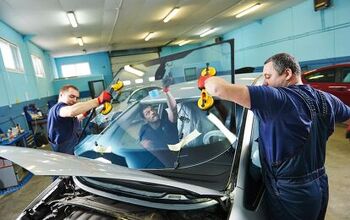




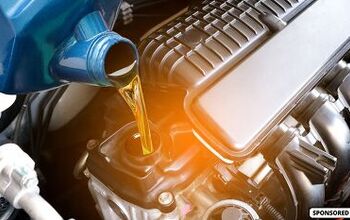
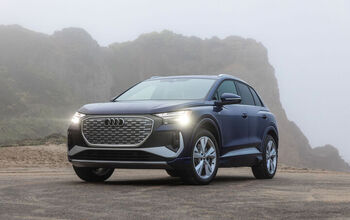









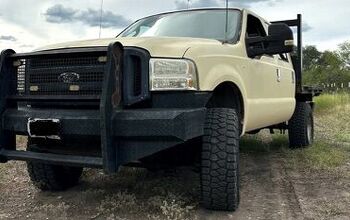
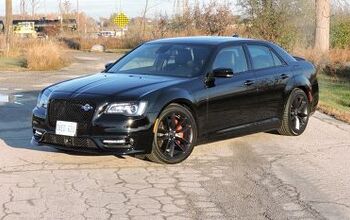
Comments
Join the conversation
Hello, I want to buy an air compressor with a 70-liter tank, silent and oil-free. But some products have two engines and some have single engines. Please advise what are the advantages and benefits of each? Thanks for your advice